

A few years ago, as a beauty editor, I attended a major cosmetics brand's launch of new face powders. Sitting at the presentation, I was shocked to hear the rep-resentative explain that the line was for women of all skin tones, yet I could see it came in only three shades: fair, light/medium, and medium. As she spoke, she avoided looking at me and my darker-than-medium skin. Finally, a colleague jumped in and asked what darker women were supposed to use. She didn't have an answer. It was awkward. I felt confused and angry, just like I did in high school when I watched my lighter-skinned friends buy makeup, while I was left empty-handed.
The presentation happened not long ago, in 2011, but it could easily have been in the 1970s, when women with medium or dark brown skin had even fewer options. My friend's mother, Patricia Goodson, a 60-year-old former model, remembers what it was like: "When I was in my 20s, there wasn't foundation for me to buy. I could shop for mascara, eyeliner, and lipstick, but that was it." Over the years, shade ranges have increased, but as recently as 2012, the options have been limited.
Now things are changing. The U.S. Census Bureau projects that people of color will make up half of the population by 2050. And the number of Americans of mixed race grew 32 percent between 2000 and 2010. That makes for a multitude of new skin tones, and cosmetic makers are going to have to expand their offerings to keep up with women's needs.
For example, Giorgio Armani Cosmetics recently stepped up the game with their Maestro Fusion Makeup, which utilizes an innovative transparent filler technology that allows it to disappear into all skin tones. Last year, L'Oréal Paris added nine medium and dark shades to its True Match Super Blendable Makeup line, bringing the total number of hues to 33, and niche companies that cater to skin of color, like Vasanti and Iman Cosmetics, continue to fill the void. (Iman's new BB cream comes in six shades.)
Even more good news: Retailers are making it easier to shop for makeup. In conjunction with Pantone Color IQ, Sephora just launched a tool that helps women find a foundation match from the 1,000-plus shade options the stores carry. The process is easy (and free): A Sephora beauty adviser uses a handheld spectrocolorimeter (a device that measures color spectrum) to snap images of the skin on your forehead, cheek, and neck. Based on the photos, your skin tone is assigned a Pantone number, and an iPad app compares the color to Sephora's library of shades and recommends the best products for your complexion. Color IQ is in select stores now, but it will be in all of the company's locations by 2014. Its creation confirms what I've always suspected: Women of all skin tones sometimes have a hard time finding makeup, period.
And finally, thanks to globalization, the demand for cosmetics has been exploding worldwide. So far this year, MAC Cosmetics has opened new stores in Zambia, Botswana, and Nigeria; L'Oréal has expanded distribution in East Africa, India, and the Middle East. Perhaps the makeup being developed for these new markets will also make its way to U.S. stores, where it can fill in the gaps between the fairest and the darkest women. It's about time.
Stay In The Know
Marie Claire email subscribers get intel on fashion and beauty trends, hot-off-the-press celebrity news, and more. Sign up here.
Baze Mpinja has been working as a writer and editor for national print magazines, digital media outlets, and global beauty brands for nearly 15 years. A few of her other passions: books, bars and Brooklyn.
-
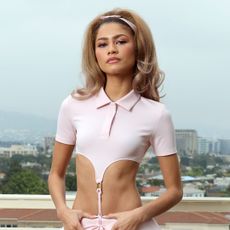 Zendaya Reveals What Serena Williams Told Her After Seeing 'Challengers'
Zendaya Reveals What Serena Williams Told Her After Seeing 'Challengers'The GOAT has weighed in.
By Danielle Campoamor Published
-
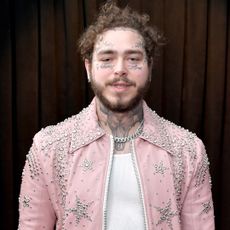 Post Malone Gives Taylor Swift Her Flowers in Moving Social Media Post
Post Malone Gives Taylor Swift Her Flowers in Moving Social Media Post"I am floored by your heart and your mind."
By Danielle Campoamor Published
-
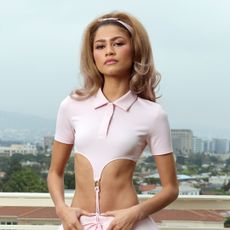 Zendaya Stuns in Cut-Out Custom Jacquemus Gown During L.A. 'Challengers' Tour
Zendaya Stuns in Cut-Out Custom Jacquemus Gown During L.A. 'Challengers' TourThe actress continues to make the tennis fashion trend her own.
By Danielle Campoamor Published
-
 The 20 Best Hair Masks for Damaged Hair, According to Experts and Editors
The 20 Best Hair Masks for Damaged Hair, According to Experts and EditorsHealthy strands, here we come!
By Gabrielle Ulubay Last updated
-
 The 11 Best Magnetic Lashes of 2023
The 11 Best Magnetic Lashes of 2023Go ahead and kiss your messy lash glue goodbye.
By Hana Hong Published
-
 The 12 Best Cream Eyeshadows, According to Makeup Artists
The 12 Best Cream Eyeshadows, According to Makeup ArtistsThe best part? They’re so easy to apply.
By Samantha Holender Published
-
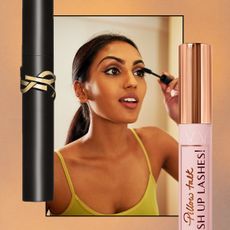 The Best Mascaras Lift, Lengthen, and Volumize
The Best Mascaras Lift, Lengthen, and VolumizeYour eyelashes will thank you.
By Samantha Holender Last updated
-
 The 9 Best Bronzers for Dark Skin Tones, According to Makeup Pros
The 9 Best Bronzers for Dark Skin Tones, According to Makeup ProsBecause Black and Brown girls like to look tan, too.
By Maya Allen Published
-
 The 15 Best LED Light Therapy Face Masks for At-Home Treatments, According to Beauty Editors and Experts
The 15 Best LED Light Therapy Face Masks for At-Home Treatments, According to Beauty Editors and ExpertsLight up your skincare routine.
By Samantha Holender Last updated
-
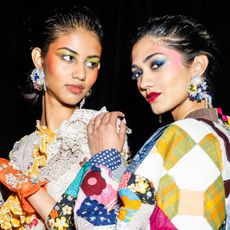 Eyeshadow Palettes You’ll Actually Use
Eyeshadow Palettes You’ll Actually UseNo shade left behind.
By Samantha Holender Last updated
-
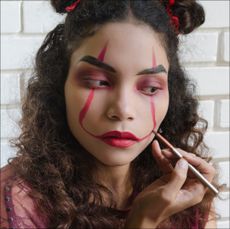 50 Easy Halloween Makeup Ideas for 2024
50 Easy Halloween Makeup Ideas for 2024From cute to scary, these looks only take minutes.
By Samantha Holender Last updated